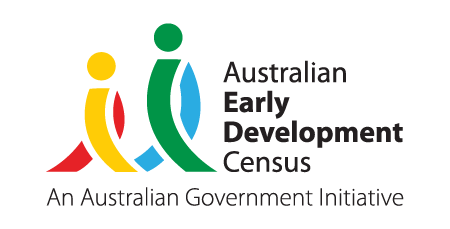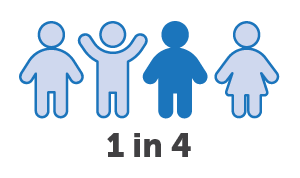On this page
The Australian Early Development Census (AEDC) is a national data collection that helps us understand how young children across Australia are growing and learning and how well they and their families are supported.
Schools, communities and governments can use the information as a starting point to examine whether their services and supports are meeting the needs of children, families and communities.
Overview
The AEDC is a national census that captures data on children’s development. It serves as an indicator of how well children and families are supported from conception through to school age.

The AEDC:
- is a lead in comprehensive early childhood development data
- provides valuable population and trend data on the development of Australian children
- highlights what is working well and what needs improvement to support children and their families from conception
- measures 5 domains of early childhood development and wellbeing which help children engage in learning, connect with peers and are closely linked to predictors of adult wellbeing, mental health and educational outcomes.
If you're looking for results and data go to:
Video: introduction to the AEDC (6:11)
Watch the video to learn about the purpose of the AEDC, why it's important and what benefits come from the data collection.
Video transcript – introduction to the AEDC
The AEDC fact sheet has a useful summary of what the AEDC is and how it's used by governments, communities and schools and early childhood education and care services.
Learn more about the Australian Early Development Census (AEDC) on the national website.
Why this data collection is important
When children thrive in their early years they have a strong foundation for lifelong learning, health, development and wellbeing.
Once children fall behind in their learning, they’re more likely to stay behind.
The data shows that around 1 in 4 South Australian children are developmentally vulnerable when they’re starting school.
South Australia is taking steps toward increasing the proportion of children on track.

Our role in supporting early childhood development
Social and economic forces, cultural values, laws and policies in combination with health, education, biological and environmental factors shape children’s development.
Governments, communities and education sectors have important roles in providing the right kinds of environments, services, resources and support during the early years. They can use AEDC data in frameworks, policy, planning, monitoring, evaluation and stakeholder engagement.
If we use AEDC data, together with other information sources, we can:
- amplify the needs of children and families
- strengthen partnerships
- manage resources and inform decision making
- provide the right kinds of services, resources and support during children’s early years
- set conditions needed for children to thrive and benefit communities.

Read more about our goals for early childhood development in SA (on this page).
How the census works
The data collection is done every 3 years. The first AEDC was in 2009 and the most recent in 2024. The Australian Government partners with all states and territories to deliver the AEDC.
We collect the data
Teachers from government, catholic and independent schools complete the AEDC data collection tool to record what they know about the children in their class and what they observe.
Find details in the guidance and questions for teachers (AEDC Instrument).
The 2024 AEDC data collection (cycle 6, the most recent one) took place from 1 May 2024 to 5 July 2024.
Read about the domains, and what it means to be developmentally vulnerable, at risk or on track on a specific domain.
Data is summarised and published
Data from all schools is summarised, keeping children’s data confidential.
Results are published at the community, state and national level in a range of formats including maps, graphs, tables (LGA, SA2, SA3, SA4, Remoteness, SEIFA).
Schools can access their profiles, but these aren’t published.
Find SA results, guides and resources on this website, or access national data on the AEDC Data Hub.
Understanding the data
Read the about the summary indicators fact sheet to understand the 3 main indicators that highlight children’s development strengths and vulnerabilities, how they are calculated and how to interpret them.
Video: understanding the data (5:46)
The video outlines how the data is collected, how results are measured and reported and how to consider the results.
Video transcript – understanding the data
You can also:
- browse resources from the AEDC to help access and interpret data
- find out more about the AEDC' (national website).
Using AEDC data
The reporting, publication or analysis of AEDC data and results must be in accordance with the AEDC data guidelines.
Find out more about using AEDC from your perspective on our pages:
Schools and early childhood services
Guidance on how to access school and community results and how to interpret and use them to inform planning.
Communities
Advice and resources for community organisations, non-government organisations (NGOs), local governments, businesses and community members on how to use AEDC data and results to support children and families.
Policy makers
Guidance on why and how to use AEDC data on this page, including how to access and use the data and examples of how other policy makers have used it.
Families
An overview of the census and why it's important in plainer language. The page includes tips and links to resources on how families can support their child's early development.
Researchers
See what type of data is available, how to access it and guidance and requirements for using it in research.
Our goals for early childhood development in SA
The South Australian Outcomes Framework for Children and Young People uses the AEDC to help measure how children are faring.
The Office for Early Childhood Development (OECD) is leading South Australia’s efforts to:
- reduce the proportion of children developmentally vulnerable on 1 or more AEDC domains to 15% by 2043 as recommended by the Royal Commission into Early Childhood Education and Care
- achieve the Closing the Gap Outcome 4 – Aboriginal children thrive in their early years, target: By 2031, increase the proportion of Aboriginal and Torres Strait Islander children assessed as developmentally on track in all 5 domains of the AEDC to 55%, as described in the South Australian Closing the Gap Implementation Plan 2024-26 .
To progress these goals the OECD is working in partnership with other government agencies, local government, community organisations, businesses, long day care services, preschools and schools.


